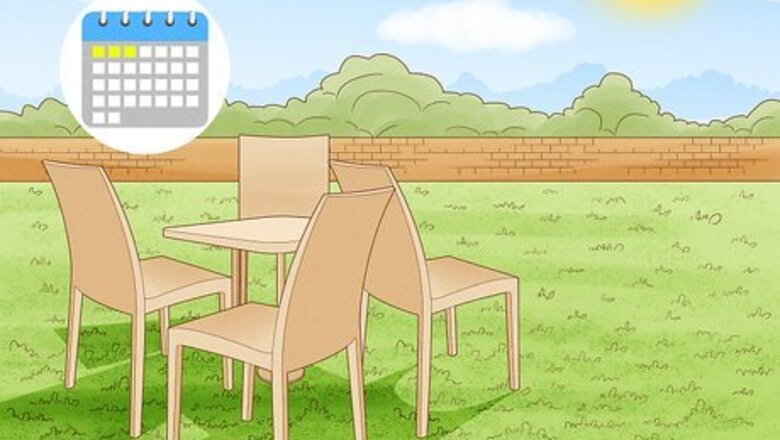
views
- Get rid of drywood termites by using boric acid baits or injecting wood with pesticide.
- Kill subterranean termites by releasing beneficial nematodes into the soil or using termite baits.
- Contact a professional pest control company to take care of large infestations.
Getting Rid of Drywood Termites
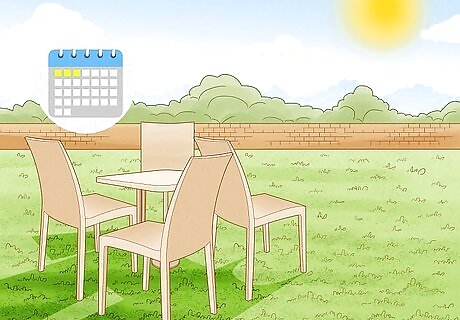
Expose the wood to sunlight. If the termite-infested item is not your home but rather a piece of furniture or an item that can be removed from your home, expose it to sunlight to naturally kill termites. Termites thrive in darkness, and the heat and light from the sun will kill them. On a sunny day, place your furniture outside for as long as possible—preferably 2 to 3 days. Drywood termites are found mostly in warm, coastal regions, primarily California, Texas, Louisiana, Florida, and Georgia.
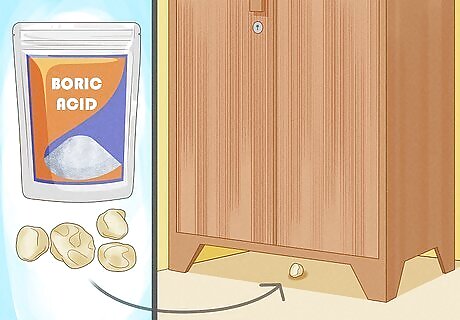
Set up boric acid baits. Purchase boric acid baits and place them around your home, both inside and outside. Boric acid shuts down the termite's nervous system while dehydrating it, so it will quickly kill any termites that come into contact with it. Boric acid is one of the most common and effective ways to dispatch termites. In fact, it is the main insecticide used in many store-bought termite insecticides. Check on the bait station regularly and replenish it with boric acid as needed. You should see the termite carcasses nearby. Boric acid is relatively non-toxic, so it’s safe to use around children and pets.
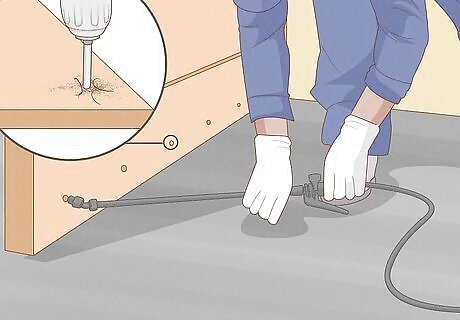
Drill and inject wood with pesticide. If you can tell exactly where the infestation is, use a drill bit to drill holes along the structure, about 3 to 5 in (7.6 to 12.7 cm) apart. Inject the wood with pesticides to kill the termites once they come into contact with it. Injection is effective if you know exactly where the termite colony is. However, if you miss any termites, they will continue to breed inside your wooden structure.
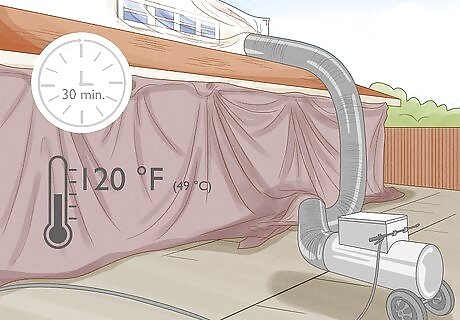
Heat wooden structures to 120 °F (49 °C). Heat treatment is a non-chemical way to kill drywood termites, but it must be done by a professional. Contact a pest control service near you and ask about a heat treatment. Typically, the company will tent the infested structure and then heat it to 120 °F (49 °C) for about 30 minutes. Termites cannot survive this intense heat, and the colony will die after about half an hour. Keep in mind that heat treatments may not be suitable for all structures. If you have heat-sensitive materials in your structure (like plastic) that cannot be removed, you may want to choose a different method.
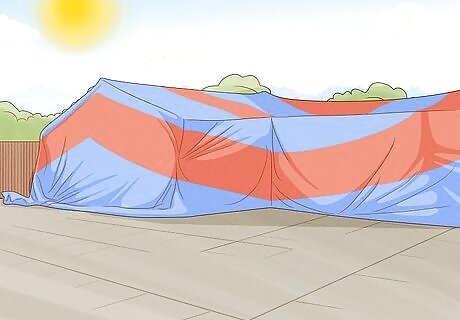
Get the structure fumigated for large infestations. At-home methods are great for small colonies, but a large termite infestation needs to be treated by a professional. If you’ve tried a few measures and are still seeing termites, contact a pest control company right away. Drywood termites can cause a lot of damage to wooden structures. It’s important to get rid of them fast to prevent issues later on.
Getting Rid of Subterranean Termites

Release beneficial nematodes into the soil. Beneficial nematodes are small, unsegmented worms that are natural parasites to garden pests, including termites. Buy a bag of nematodes, then release them into the soil around your home. The nematodes will search for hosts (like termite larvae) and burrow into them, killing them within 48 hours. For use in soil temperatures above 60 °F (16 °C), use nematodes immediately after they are purchased. If you do not use them immediately, store them in a refrigerator. Release the nematodes in the early morning or after sunset, as UV light will harm them. Subterranean termites can be found anywhere in the states.
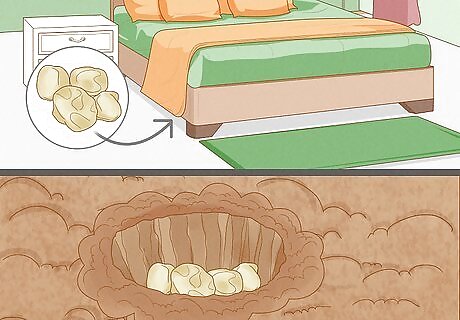
Set up termite baits. Termite baits contain insecticide that will kill termites when they eat it. You can either buy underground termite baits to insert the baits into soil, or above ground termite baits to place around your home. Set these baits up and check them regularly for dead termites. Termite baits are not toxic to humans or animals, so they’re safe to use around your home.

Inject soil with pesticides. If you know that the termites are coming in from the soil (and most subterranean termites live in topsoil), then you can target them in their colony. Buy a pesticide with a wand and spray it directly into the soil to drench the area. When the termites come into contact with the pesticides, the toxicity will kill them. You can use liquid pesticide or foam pesticide to inject soil. To use foam pesticide, stick the nozzle of the canister into the soil, then pull the trigger.
Signs of an Infestation
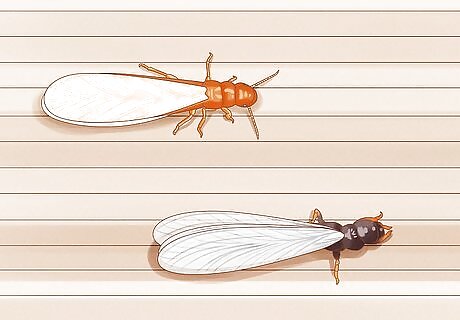
Determine the type of termites you have. There are 2 general types of termites that might infest your home: subterranean and drywood termites. The former are found in both the soil around your home and the wood of your home, while the latter thrive solely in wood. Drywood termites are found mostly in warm, coastal regions—primarily California, Texas, Louisiana, Florida, and Georgia. Subterranean termites can be found anywhere in the states. Subterranean termites often leave “mud tubes” in a trail along the side of wood or foundation. They also like moist and soft wood, whereas drywood termites prefer dried out wood. Drywood termites are typically white or brown, while subterranean termites are usually dark brown or black.
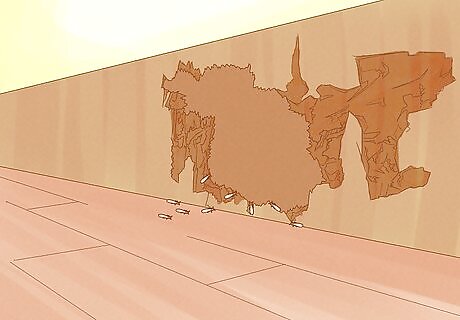
Watch for termites exiting or entering a structure. Termites are small and can be easily missed, but once you know where to look, you can identify an infestation. Watch for termites coming in or out of your foundation or a wooded area. Typically, they are most active during the day, but may also emerge at night. You may also find a termite nest on your property; a subterranean termite infestation will build a system of tunnels and tubes of mud, while a drywood termite infestation will present itself in a nest inside the wood.
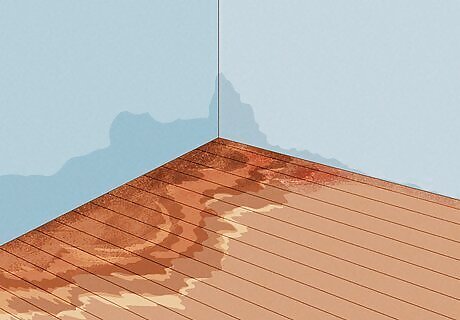
Look around for sagging floors or small holes in woodwork. Since termites eat wood, you can often find evidence of them by looking for damage. If your wood floors or beams are saggy, or if you see small holes drilled into the wood for no apparent reason, it’s likely that you have an infestation. Take a screwdriver and flashlight with you to your basement, and examine crawlspaces and foundation beams by tapping on the wood to check for hollowness and to push the screwdriver into the wood to test for strength. If the wood gives easily and falls apart, you may have a termite problem on your hands. As you look for termites, keep an eye out for their waste, too. Termite droppings are wood colored or darker brown pellets of excrement. The presence of these droppings near weakened wood could indicate an infestation.
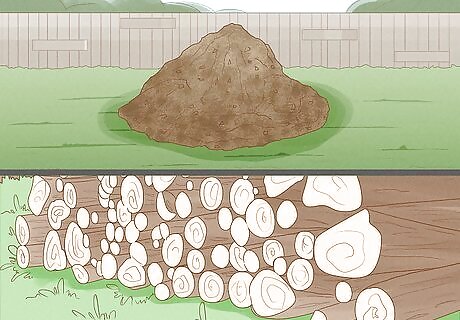
Examine the wood and compost piles around your home. Subterranean termites will congregate around your home, not just inside of it. If you have any wood piles or compost piles outside, look for evidence of termites, like their waste or discarded wings. Subterranean termites typically do much more damage to a home than drywood termites do.
Preventing Future Infestations
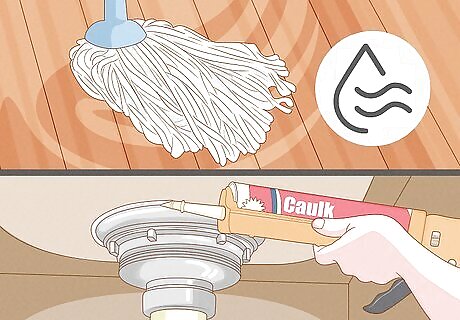
Maintain a dry home. Termites are naturally drawn to damp and moist habitats because they need water to survive. Be sure to catch and repair leaks as fast as possible, and never let standing water sit on your property to prevent infestations. Dirty wet gutters are also an ideal home for termites, so keep your gutters free of debris for further prevention, too.
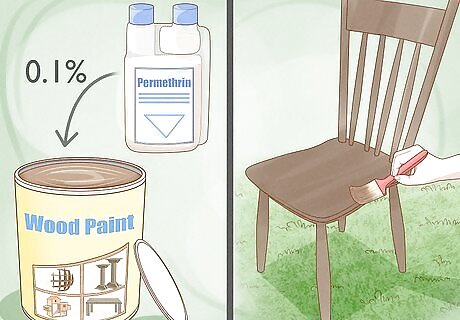
Use pest repellent in wood polish or paint. Adding 0.1% (approximately 1 tablespoon to a gallon) permethrin to paint or wood polish or wallpaper glue while building or repainting the house will keep termites away permanently. You can even add permethrin to the cement you use to lay flooring or the glue you use to lay wooden flooring. Since permethrin is a safe pesticide approved for human use, there is no added risk of toxicity. If you’re building a new structure, look into adding termite barriers to the foundation or walls. This material is specifically made to keep termites away from your home.
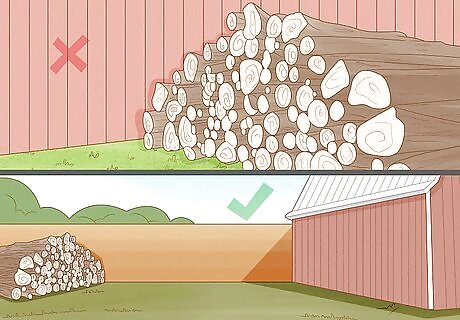
Keep wood off your property. Termites obviously feed heavily on wood so keep large amounts of firewood and other loose tree trunks and branches away from your home. If you maintain large amounts of wood on your property, you are only inviting a termite feast. If you must keep wood near your home, cover it completely to keep it dry; this will minimize the attraction for the termites. Keep vegetation 6–12 in (15–30 cm) away from your home so termites are less likely to come in.

Seal any cracks in your home. By simply caulking and sealing the windows, doorways and cracks around your home, you are taking the first and important steps toward making sure that no termites invade and infest your property. Gaps around electrical wiring and pipes to and from your house are another easy way for termites to traffic themselves into your home, so be sure to fill those as well. Screens on your doors, window and porch are also a necessity if you are wary of a termite infestation.
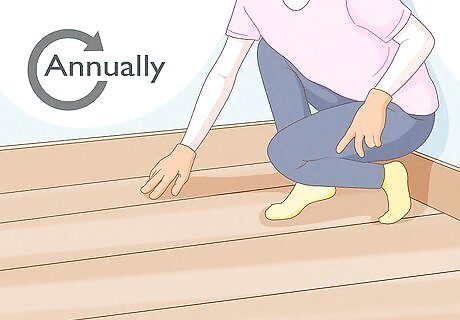
Inspect your property annually for termites. The best way to prevent termites is to catch them early. Contact a pest control company near you and set up an annual appointment for an inspection. A professional exterminator will go over your entire property, including the hard-to-reach places, and look for small signs of termites. While you can inspect your own property, it’s recommended that you get a professional to do it. Termites can be hard to find, especially since they tend to congregate in dark, secluded areas.















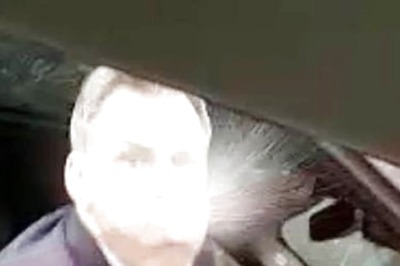


Comments
0 comment